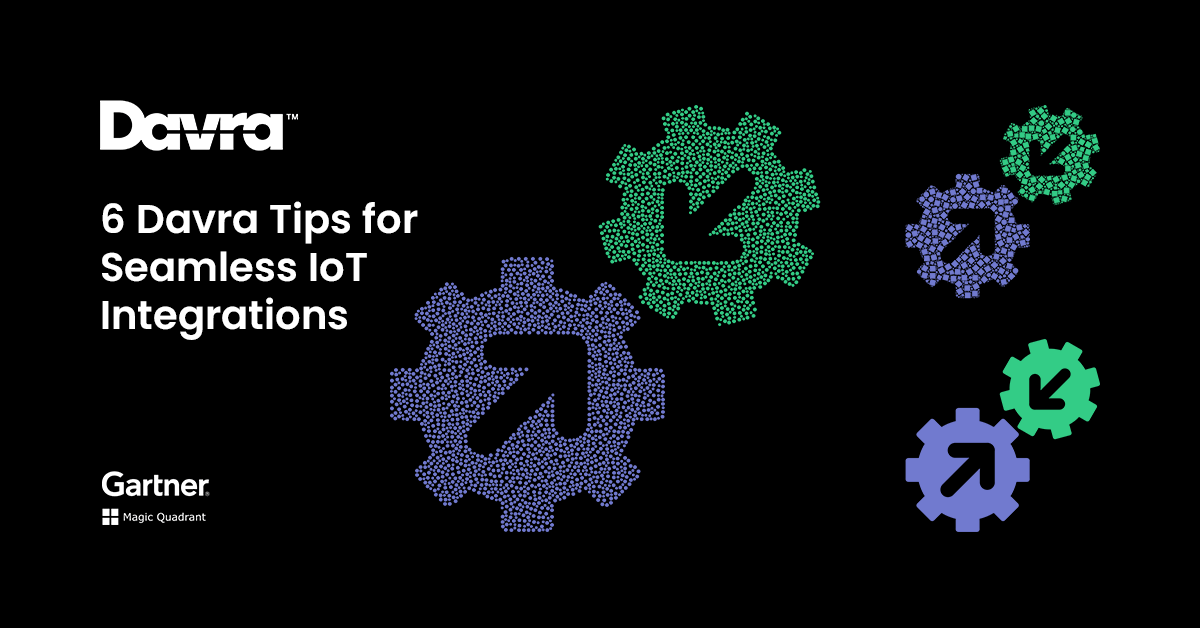IoT in Healthcare Use Cases eBook
Download Your Free IoT in Healthcare Use Cases eBook
Read More


The myriad business systems tucked behind the curtains of successful enterprise don’t just work by divine providence. In addition to provisioning the essential resources, you also have to combine them in some semblance of order. Seamless IoT integrations are the key to generating high-resolution, accurate data that faithfully reflects your operating realities.
If you’ve been paying attention, you’ll immediately notice a complication. IoT systems, CRMs and ERP tools are rarely designed with knowledge of their counterparts. To an application that exists in virtual isolation, the incoming and outgoing data streams your business relies on are just raw information. It’s up to you to create an integration that prioritizes these links and keeps information flowing without a hitch.
Should you just give up while you’re still ahead? Here are six quick ways to get your IoT Platform ecosystem running in smooth cooperation with any business system.
Want to plan a clear path around the stumbling blocks in treacherous terrain? Watch someone else take the lead. While you might not want to outright copy another enterprise’s business model, you should certainly be amenable to learning from others’ mistakes.
This is easier than it seems with the IoT. You don’t have to go out on a limb or disclose your internal operating practices to the world to find guidance on subjects like:
• Connecting specific branded hardware and components to devices made by other manufacturers,
• Bootstrapping apps using configurations and settings that are known to have worked in the past,
• Choosing operating systems, network hardware, servers and other architectural elements that are easy to maintain, and
• Building custom IoT networks using off-the-shelf or widely available parts.
Well-supported systems also grant you enhanced power to correct inevitable problems. When you can simply call a tech support expert or industry insider for pointers, battling challenging issues is less of an ordeal.
Your municipal facility needs better access control. You want a future-proof security system, so you choose generic camera hardware that’s known to work with a range of OSes and facial recognition APIs. While this strategy makes it easier to upgrade without getting locked in later, it also brings up some vital puzzles, like which streaming formats you should configure your cameras to produce. Would an alternative have been a better option for freeing up bandwidth? How far can you push the bounds of recording fidelity to save storage space without losing vital information?
IoT communication protocols take many forms. The distinctions are confusing for most regular mortals, so don’t feel embarrassed if they escape you. Instead of spending hours attempting to decode RFC documents, start by looking at the most common standards used by your peers and competitors, such as MQTT, DDS and AMQP.
Much like comparison shopping for network hardware, you should pick protocols that suit specific tasks. For instance, MQTT is commonly employed for device-to-server communication, whereas the queue-oriented AMQP links independent servers and backbones to each other. Also, understand that each protocol comes in an array of unique flavors that may push the boundaries of the standard publish-subscribe models you’re used to.
Protocols and standards are integral to KPI-oriented intrasystem communication. For instance, if your IoT platform dashboard outputs performance spreadsheets that your ERP can’t readily consume, then you’ll either need to add sanitizing middleware or homogenize the format. Thinking about such conflicts ahead of time leaves you in less of a lurch when you subsequently need to make business-driven tweaks.
The IoT’s hands-on tunability makes it tempting to start picking sensors and controllers without looking back but try to keep the bigger picture in mind. While choosing specific hardware components according to their functional features is par for the course, adopting a block-based build strategy may help spur progress.
The IoT industry offers plenty of inspiration for those trying to implement system-centric design practices. Intel and other companies regularly publish detailed guides on how to solve unique problems with specific platform recipes, so you don’t have to do everything from scratch. Niche case studies, such as Admirror’s quest to improve update speeds for its advertisement-displaying smart mirrors in business venues, can also give you a heads-up on the possible hurdles of adapting existing platforms to your purposes.
System-level integration can also prove easier thanks to the modern coder’s best friend: debugging engines. These tools let you troubleshoot problems with the aid of descriptive, human-readable feedback, making them way more accommodating than unrelated hardware components or DIY software. Think of it like receiving a box of Lego versus a sack of loose plastic microbeads and an injection mold machine for your birthday — which sounds like more work?
IoT projects deserve specific lifecycle considerations, but they shouldn’t buck every standard you’ve worked to establish. Should a given development workflow serve your enterprise well, you don’t need to abandon it, but it’s smart to consider some form of harmonization.
Eliminating dev process hangups can make it easier for business system IoT integrations to smoothly. If your dev team follows a standard operating procedure for making system modifications, you can solve specific integration problems without as much thinking or reinvention. Since the scaffolding is already in place, all you have to do is start climbing towards the target.
It can be extremely hard to predict the emergent behaviors that IoT systems might produce under pressure. Fortunately, you don’t have to practice crystal ball viewing to avoid future bad omens. Running more comprehensive tests can help you avoid common errors and understand how systems might interact in real life. You get bonus points if you use digital twins and other robust trial frameworks to simulate integrations in advance.
If there’s one thing that can throw a spanner into the works of business system IoT integrations, it’s inadequate security. Nothing’s worse than connecting something new to your IoT platform only to discover that it corrupts your CRM or ERP data — or reveals it to the outside world.
As noted by Carnegie Mellon researchers, untested IoT devices often come with consequential vulnerabilities. From letting hackers access your network via unchanged root passwords to having unsecured UART ports or software backdoors, some new devices carry risks that stand in stark contrast to their purported benefits.
Fortunately, there are many ways to stay aware without sacrificing your time or sanity. In addition to regularly reading industry news, for instance, you can use automated code review tools to highlight security dependency errors. You can also work with vendors that do their due diligence to keep you safer — by offering IoT platforms that have proven their worth in real-life implementations. Make your IoT integrations a bit less bumpy by discussing the particulars with an insider at Davra.
Brian McGlynn, Davra, COO
Download Your Free IoT in Healthcare Use Cases eBook

Davra IoT is the only Industrial IoT Platform Available on AWS Marketplace
Read MoreThe Collaboration of Humans & Robots Has Created The Cobot
Read More